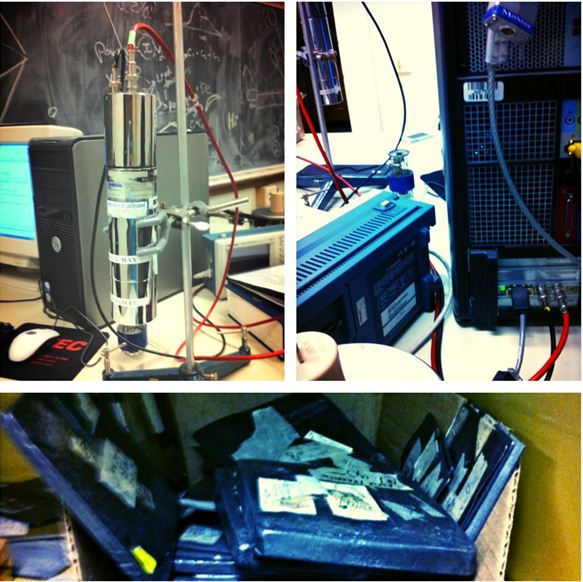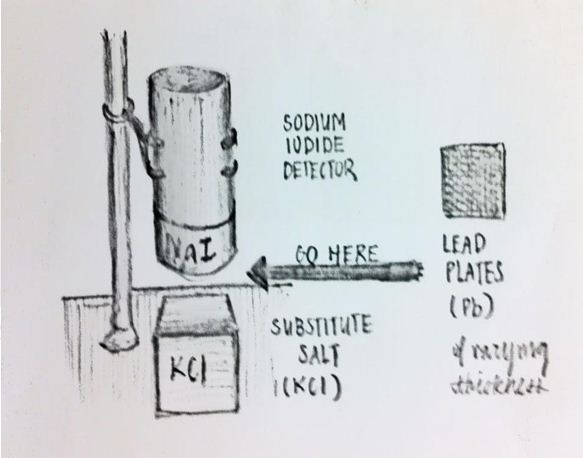|
This experiment involves the lead shielding of the gamma ray flux of potassium-40. Potassium chloride is relatively rich in the radioactive isotope K-40, which releases gamma rays. Using a sodium iodide detector, first calibrated with cesium-137, gamma rays were counted and sorted by energy. The data was analyzed in the region between 1.1889 MeV and 1.5129 MeV, which encompassed the spectrum generally emitted by the source. Data was collected for
at least an hour and a half each, and background checks were done overnight every few days. In each trial, different thicknesses of lead were stacked on top of the salt, effectively decreasing the count rate. After all the data was collected, the data points formed a decreasing exponential trend. We found the experimental absorption coefficient of lead to be 5.747, and the percent error was approximately 12.95%.
|
 |
 |